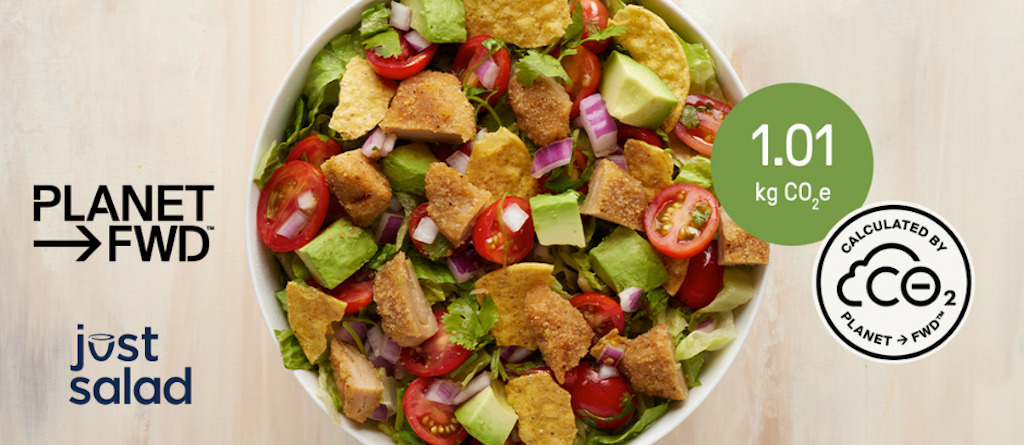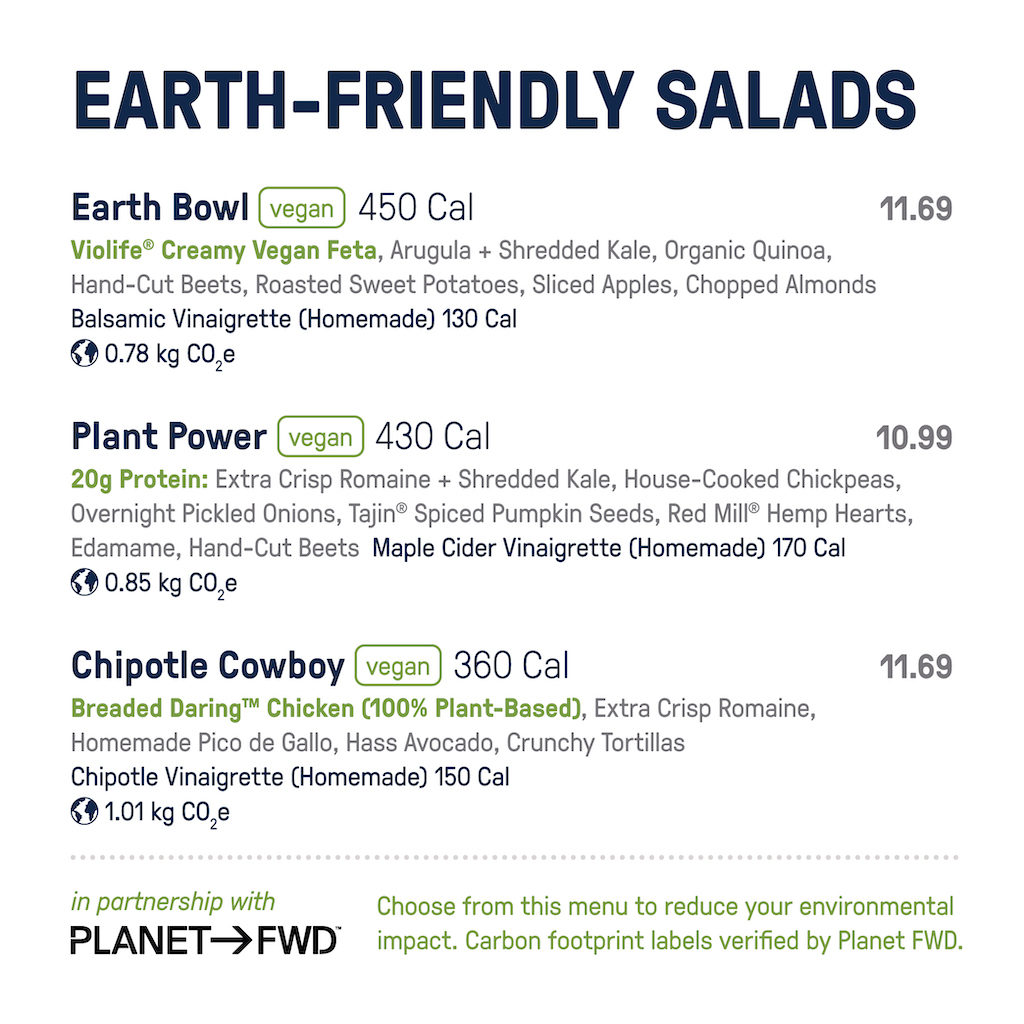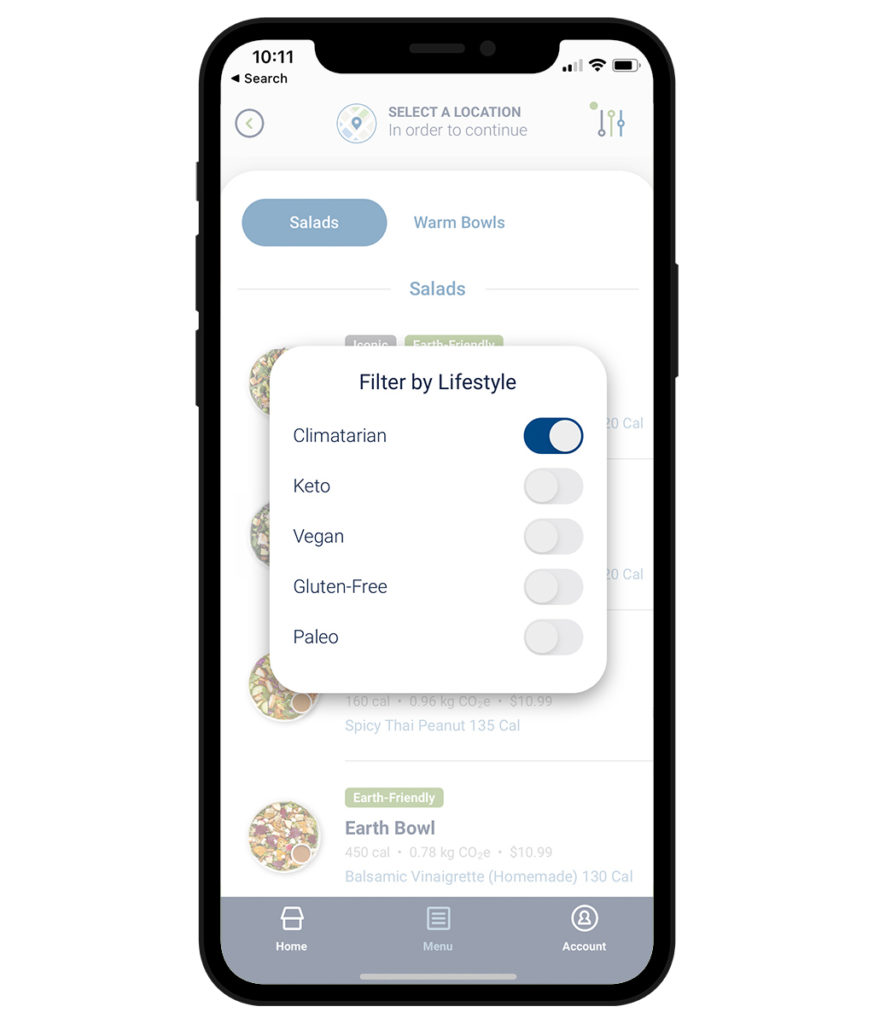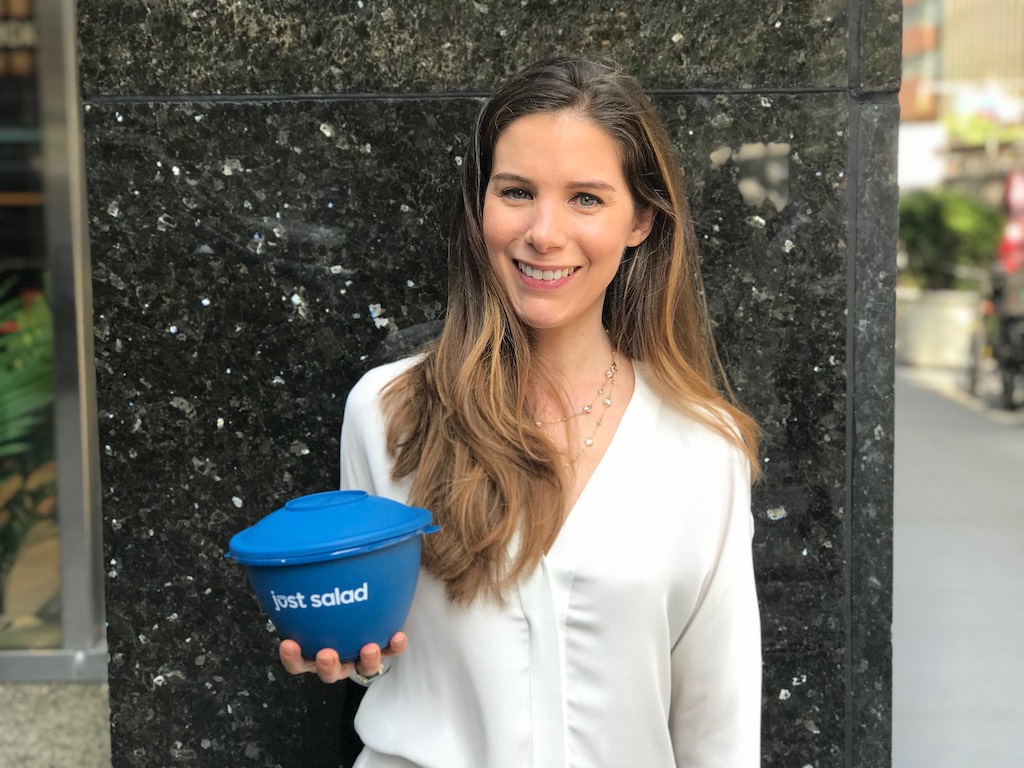4 Mins Read
As we’ve covered before, Just Salad is not your typical fast casual food chain. From introducing a ‘Zero Foodprint’ menu to boost regenerative farming to launching the first plastic-free anti-food waste meal kit brand, the salad bowl pioneer has made serious sustainability. Not only was it one of the world’s first chains to debut reusable packaging (I had my own bowl as far back as 2012), it also became the first restaurant chain in the U.S. to commit to carbon labelling its entire menu back in 2020. Their carbon labels have now achieved compliance with international greenhouse gas (GHG) emissions protocols ISO 14040/14044 and the British PAS 2050 standards.
The company recently released their 2021 Impact Report, which showcased its progress on a variety of metrics including completing Scope 1, 2, and 3 emissions inventory, funding the planting of over 12,000 trees via Mastercard’s Priceless Planet Coalition and reduced average annual energy use by 7%, with reductions of up to 20% in some months, through a four-store pilot program with Budderfly.
We wanted to know more, so we chatted to Sandra Noonan, Just Salads’ Chief Sustainability Officer, to ask about all things carbon labelling in the food industry.
GQ: What goes into your carbon label? What factors are you measuring exactly?

SN: The greenhouse gas (GHG) emissions estimated by our carbon labels include CO2 , CH4 , and N2O and are reported as kg CO2e.
The calculations cover cradle-to-grave emissions including Materials & Pre-Processing, Production, Distribution & Storage, Use, and End of Life. They are guided by the following international standards: ISO 14040/14044; PAS 2050; and GHG Protocol Product Standard.
Our partner, Planet FWD, calculates the carbon impact of the individual components of each salad, including but not limited to individual ingredients and packaging materials. These are then compiled to develop the final emissions value for the overall product.
GQ: Where do you get your data?
SN: For a calculation like this one, covering cradle-to-grave emissions, multiple data sources are used. We obtain our data from several primary and secondary sources, and the exact data source depends on the material or process under consideration (for example, packaging, transportation, refrigeration).
GQ: Is the data tied to geography? For example, is data for California different than Texas, or say, China?
SN: We calculate miles traveled by each ingredient based on their origin.

GQ: Is carbon footprint enough? Or should we be measuring in a more circular way, from soil all the way to end of life?
SN: The system boundary for our carbon labels is cradle to grave, starting from the extraction of raw materials and ending at the end-of-life for all the inputs required to create a single unit of product.
GQ: What has been the impact for customers? How much of a difference has showing the carbon labels made to what is ordered?
SN: We are still in the early stages of assessing the impact of the carbon labels, since there are many factors that affect menu choices, and we have not conducted a controlled study.

GQ: Are suppliers willing to engage with giving you the data or has it been challenging?
SN: Yes, our suppliers have been helpful when we request data.
GQ: What are the biggest challenges in what you do?
SN: I prefer to think of the opportunities, and the opportunities afforded by carbon labeling are significant. They enable us to discuss the environmental footprint of our menu in a data-driven way. They give us a new way of engaging with, and talking to, customers. They have enabled us to develop a “Climatarian” dietary filter in our mobile app, which displays our lowest-footprint menu items. They give us specific insights into ways that we can reduce carbon emissions across our supply chain. It’s hard work to estimate the carbon footprint of a menu item, but there are many benefits.
Lead image of Sandra Noonan courtesy of Just Salad.





